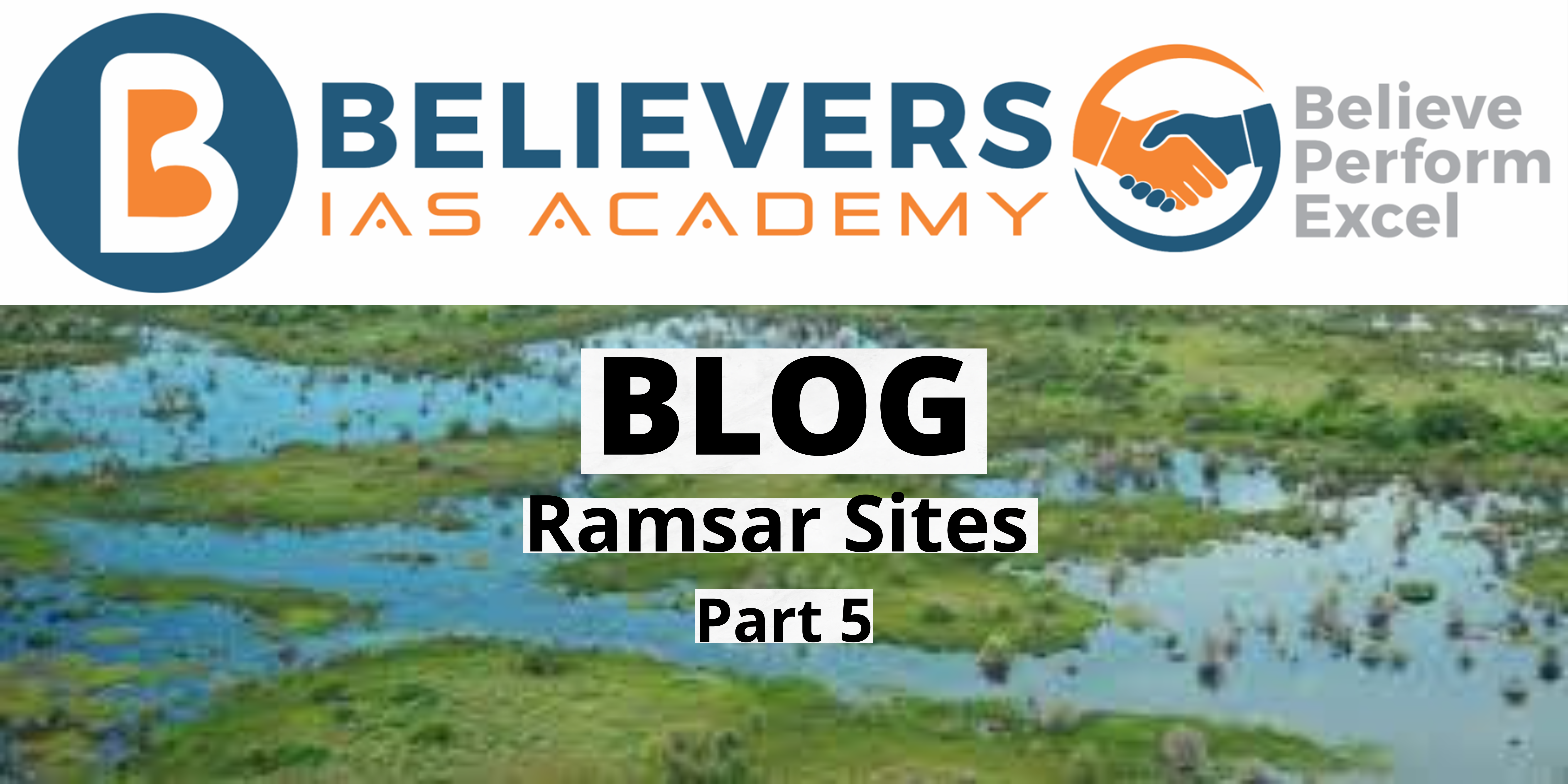Ramsar Sites – Part 5
List of Ramsar Sites in India
(O-R)
Odisha
Bhitarkanika Mangroves:
- The site’s Gahirmatha beach is said to host the largest known Olive Ridley sea turtle nesting beach in the world.
- Out of 58 recorded species of mangroves in India, 55 species are found in Bhitarkanika.
- It was declared as a wetland of international importance in 2002.
Chilika Lake:
- It is the largest wintering ground for migratory birds on the Indian sub-continent.
- It was added to the Montreux Record on 16 June 1993 but was lated removed from the Record on 11 November 2002.
- Chilika Lake was designated the first Indian wetland of international importance under the Ramsar Convention in 1981.
Satkosia Gorge:
- Satkosia Gorge carved by the Mahanadi River.
- It is the meeting point of two biogeographic regions, the Deccan Peninsula and the Eastern Ghats.
- The major species in the area include red-crowned roofed turtle (Batagur kachuga), Indian narrow-headed softshell turtle (Chitra indica), tiger (Panthera tigris) and black-bellied tern (Sterna acuticauda).
- It was declared as a wetland of international importance in 2021.
Punjab
Beas Conservation Reserve:
- The Beas Conservation Reserve is a 185-kilometre stretch of the Beas River.
- The Reserve hosts the only known population in India of the endangered Indus River dolphin (Platanista gangetica minor).
- In 2017, a programme was initiated to re-introduce the critically endangered gharial (Gavialis gangeticus) with 47 individuals released into the river 30 years after their disappearance.
- It was declared as a wetland of international importance in 2019.
Harike Wetland:
- Harike Wetland is the largest wetland in northern India.
- It supports over 200,000 Anatidae (ducks, geese, swans, etc.) during migration.
- It was declared as a wetland of international importance in 1990.
Kanjli Wetland:
- Kanjli Wetland is a man-made Wetland that subsumes the Kanjli Lake.
- It was created in 1870 by constructing the headworks across the perennial Bien River, a tributary of the Beas River to provide irrigation facilities to the hinterland.
- It was declared as a wetland of international importance in 2002.
Nangal Wildlife Sanctuary:
- It is home to endangered Indian pangolin (Manis crassicaudata) and Egyptian vulture (Neophron percnopterus) and the vulnerable leopard (Panthera pardus).
- The site is of historic importance as the Indian and Chinese Prime Ministers formalized the “Five Principles of Peaceful Coexistence (Panchsheel)” there in 1954.
- It was declared as a wetland of international importance in 2019.
Ropar Wetland:
- It is a manmade wetland of lake and river formed by the 1952 construction of a barrage for diversion of water from the Sutlej River for drinking and irrigation supplies.
- The site is an important breeding place for the nationally protected Smooth Indian Otter, Hog Deer, Sambar, and several reptiles, and the endangered Indian Pangolin (Manis crassicaudata) is believed to be present.
- It was declared as a wetland of international importance in 2002.
Rajasthan
Keoladeo National Park:
- It is a complex of ten artificial, seasonal lagoons, varying in size, situated in a densely populated region.
- It was added to the Montreux Record, 4 July 1990 due to “water shortage and an unbalanced grazing regime”.
- It was declared as a wetland of international importance in 1981.
Sambhar Salt Lake:
- It is a large saline lake fed by four streams set in a shallow wetland and subject to seasonal fluctuations.
- The site is important for a variety of wintering waterbirds, including large numbers of flamingos.
- It was declared as a wetland of international importance in 1990.




